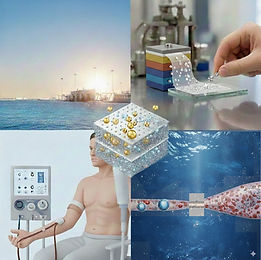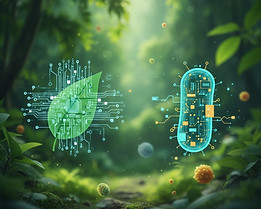top of page
Researcher : Dr. Chae Bin Kim, 김채빈 (Ph.D): 2016.09~2017.08 @ KIST
Graduate Student: Ki-Beom Jeong, 정기범 (Master Course): 2016.01~2017.08 @ KIST


Polymer & Organic Energy Materials
Sustainable Polymer Materials

"Eco-friendly design for a circular economy and advanced healthcare."
We focus on synthesizing next-generation polymers that address environmental and medical challenges.
Our research encompasses chemical recycling and upcycling strategies for plastic waste management, as well as the development of bio-inspired and medical-grade adhesives designed for high performance and biocompatibility.
Advanced Membranes & Separations

"Solving water-energy-resource nexus challenges through porous engineering."
We design high-performance porous membranes for diverse applications ranging from water purification and desalination to healthcare.
A major focus is on selective ion separation technologies for the strategic recovery of lithium and precious metals, alongside developing advanced membranes for hemodialysis and biomedical filtration.
Bio-Interface Engineering

"Bridging nanomaterials and living systems for metabolic regulation."
This field explores the engineering of biological interfaces at the nano-scale.
We develop functional coatings and surface treatments for plants and bacteria to precisely control metabolic functions and enhance environmental adaptability, opening new frontiers in agricultural biotechnology and living material systems.
Intelligent Sensing

"Integrating molecular recognition with data-driven analysis."
We develop smart sensor platforms capable of high-precision molecular recognition for environmental monitoring.
By integrating sensor hardware with algorithm-based analysis, we aim to achieve superior sensitivity, selectivity, and real-time data interpretation.

bottom of page